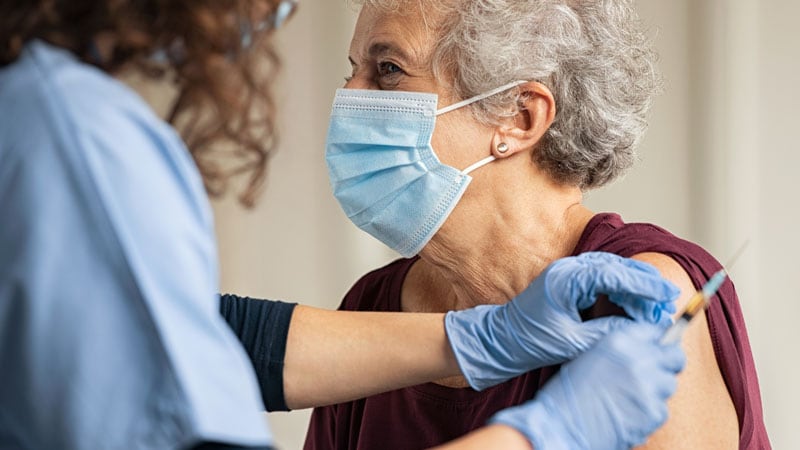Editor’s note: Find the latest COVID-19 news and guidance in Medscape’s Coronavirus Resource Center.
In the first week after the national COVID-19 emergency declaration of March 13, 2020, weekly vaccinations of Medicare beneficiaries aged 65 years and older declined as much as 62% compared with the corresponding period in 2019, according to a report published February 19 in Morbidity and Mortality Weekly Report.
By mid-April, the weekly percentages of people in this group receiving routinely recommended vaccines fell to nadirs ranging from 70% to 89%, depending on the vaccine, below corresponding 2019 rates.
“Vaccination providers should emphasize the importance of routine adult vaccination to their patients and ensure the safe provision of vaccines to protect older adults from vaccine-preventable diseases during the ongoing COVID-19 pandemic,” write Kai Hong, PhD, and colleagues with the National Center for Immunization and Respiratory Diseases at the Centers for Disease Control and Prevention (CDC).
The findings emerged from a comparison of four adult vaccines in the periods January 5 to July 18, 2020, and January 6 to July 20, 2019. The vaccines included recombinant Zoster (RZV), pneumococcal disease (PCV13 and PPSV23), and tetanus/diphtheria/whooping cough (Td/Tdap).
Using Medicare enrollment and claims data from the Centers for Medicare & Medicaid Services Chronic Conditions Warehouse, Hong’s group found that relative declines were similar cross all racial and ethnic groups. However, adults from minority groups already had lower vaccination rates than their white counterparts.
Weekly administration rates for all four vaccines dropped sharply in the week after March 13, with declines ranging from 25% for PPSV23 to 62% for RZV. The largest declines in vaccination rates occurred during two weeks: April 5 to 11, affecting PCV13, PPSV23, and Td/Tdap, and April 12 to18 when drops ranged from 70% for Td/Tdap to 89% for RZV.
By ethnicity, the largest declines occurred in Asian Medicare beneficiaries, whose vaccinations reached a nadir of 91% overall and 92% for PCV13.
Testifying to the impact of the COVID-19 emergency declaration, weekly percentages of Medicare beneficiaries vaccinated with PPSV23, Td/Tdap, and RZV were consistently higher from January 5 to March 14, 2020, than those in the corresponding week in 2019. However, those rates dropped sharply after the declaration.
These findings echo a precipitous drop in child vaccinations after the national emergency declaration, which the CDC reported in 2020.
The researchers saw a partial recovery of vaccination rates in May through July.
According to the CDC investigators, patients need to be assured that vaccination services can be delivered safely during the pandemic. They need to know that routine vaccinations protect their health and that influenza vaccination can mitigate non-COVID respiratory illness and preserve healthcare resources for treating COVID-19 during flu season.
In addition, clinicians should counsel patients about the expected reactogenicity of vaccines such as RZV in order to prepare them for any potential overlap between vaccine reactions and COVID-19 symptoms. “Ultimately, continued efforts by vaccination providers and public health officials at all levels, including specific vaccination guidance for providers by state health departments, will be needed to ensure that routine adult vaccination returns to prepandemic levels to optimize protection of all older persons against vaccine-preventable diseases,” the authors write.
The authors have disclosed no relevant financial relationships.
Morb Mortl Wkly Rep. Published online February 19, 2021. Full text
Diana Swift is medical journalist based in Toronto, Canada.
Follow Medscape on Facebook, Twitter, Instagram, and YouTube.
